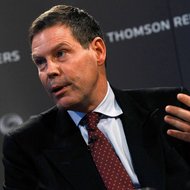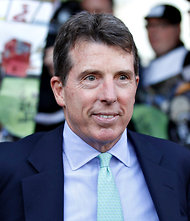With their salaries of $174,000 (or more for those in leadership roles), senators and members of Congress are paid more than most of us. These days, many of them need enough money in the first place to jump-start their campaigns.
But there have to be some lawmakers who have suffered as much as many of their constituents in the last four years, have changed the way they legislate because of it and learned some lessons worth sharing, right?
Representative Robert Turner, a Republican from New York City, lost his house in a fire after the storm this week. So for him the wound is still raw.
Senator Mike Lee, a Republican from Utah who may have the lowest net worth of the 100 senators, sold his home in a short sale. I hoped to speak to him about it, but his media representative, Brian Phillips, said in an e-mail that my column idea “has to be the silliest thing I’ve ever heard.”
Then there is Representative Joe Walsh, a freshman Republican who represents the suburbs northwest of Chicago. He proudly claims the mantle of America’s poorest congressman, telling Chicago magazine that he’s “No. 1 in poverty.” In the last few years, he’s had to answer for his tax liens, a foreclosure and an accusation that he owed more than $117,000 in past-due child support.
What do we see of ourselves in him? And what does his opponent’s efforts to brand him a deadbeat tell us about what we ought to be willing to tolerate in our elected officials?
There isn’t much in the historical record on these questions, but one example from 20 years ago is instructive. That was when the public learned that many members of Congress were helping themselves to free overdrafts from banklike government accounts.
Voters who had no such privileges at their own local banks weren’t pleased. Within one election cycle, according to Gary C. Jacobson, a political science professor at the University of California, San Diego, and Michael A. Dimock, then a graduate student at the university, who later published an academic paper about the scandal, the worst abusers were about three times as likely not to be in Congress anymore as incumbents who steered clear of the issue. This was equally true of Republicans and Democrats, though Democrats were the more egregious of the two parties in this instance.
It wasn’t until after Mr. Walsh won his Republican primary in 2010 that some of his biggest financial troubles emerged. He triumphed with the help of strong Tea Party backing. And given his call for fiscal restraint, it was only natural that local reporters would look at his personal finances.
Sure enough, right after the primary, The Daily Herald discovered that Mr. Walsh had recently lost a condominium to foreclosure. “This experience helped me gain a better appreciation for the very real economic anxieties felt by Eighth District families, many of whom are just a paycheck or two away from facing similar difficulties,” Mr. Walsh told the paper via e-mail.
Voters fed up with the goings-on in Washington seemed to empathize with this and revelations of tax liens he dealt with more than a decade ago, or at least they were willing to hold their noses and look past it. He beat the Democratic opponent in his race by just a couple of hundred votes.
But the revelations didn’t end there. Last year, The Chicago Sun-Times reported that Representative Walsh’s former wife had filed court papers seeking more than $117,000 in what she claimed was past-due child support. She also said that he failed to make his payments at the same time that he was personally lending money to his campaign, putting politics over paternity, in effect. Representative Walsh countered that there was a verbal agreement between him and his former wife that allowed him to skip the monthly payments because he wasn’t earning much money at the time.
Earlier this year, the two resolved the dispute and issued a joint statement saying that “we now agree that Joe is not and was not a ‘deadbeat dad’ and does not owe child support.”
At the time of the initial revelation, Representative Walsh’s lawyer, R. Steven Polachek, told The Sun-Times that he’d “had no more problems with child support than any other average guy.”
About 40 percent of the 500,000 or so child support cases that the Illinois Department of Health Care and Family Services handles involve late payments at any given moment. The half-million cases tend to involve households with lower income, according to a spokesman, where there may be more frequent income disruptions.
Whether the questions about Representative Walsh’s child support make him Everyman or not, however, it’s the original suggestion that he prioritized his campaign over his children that may give voters the most pause.
Article source: http://www.nytimes.com/2012/11/03/your-money/even-capitol-hill-gets-the-financial-blues.html?partner=rss&emc=rss









